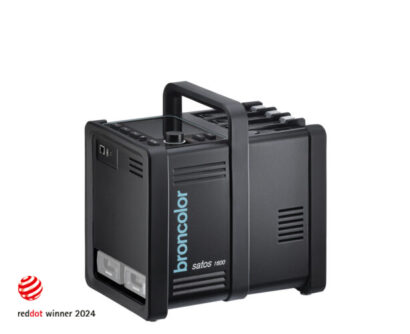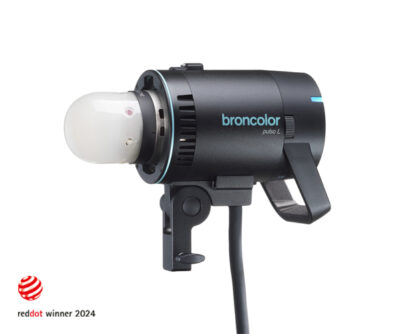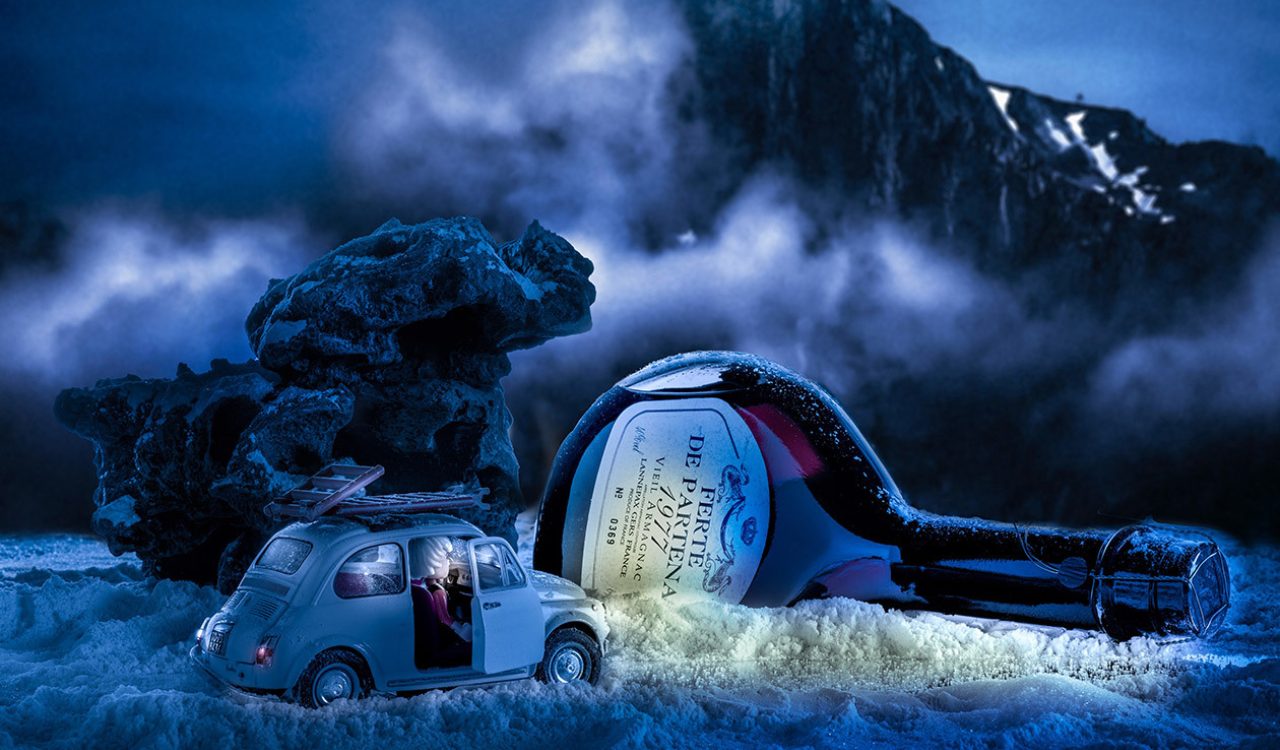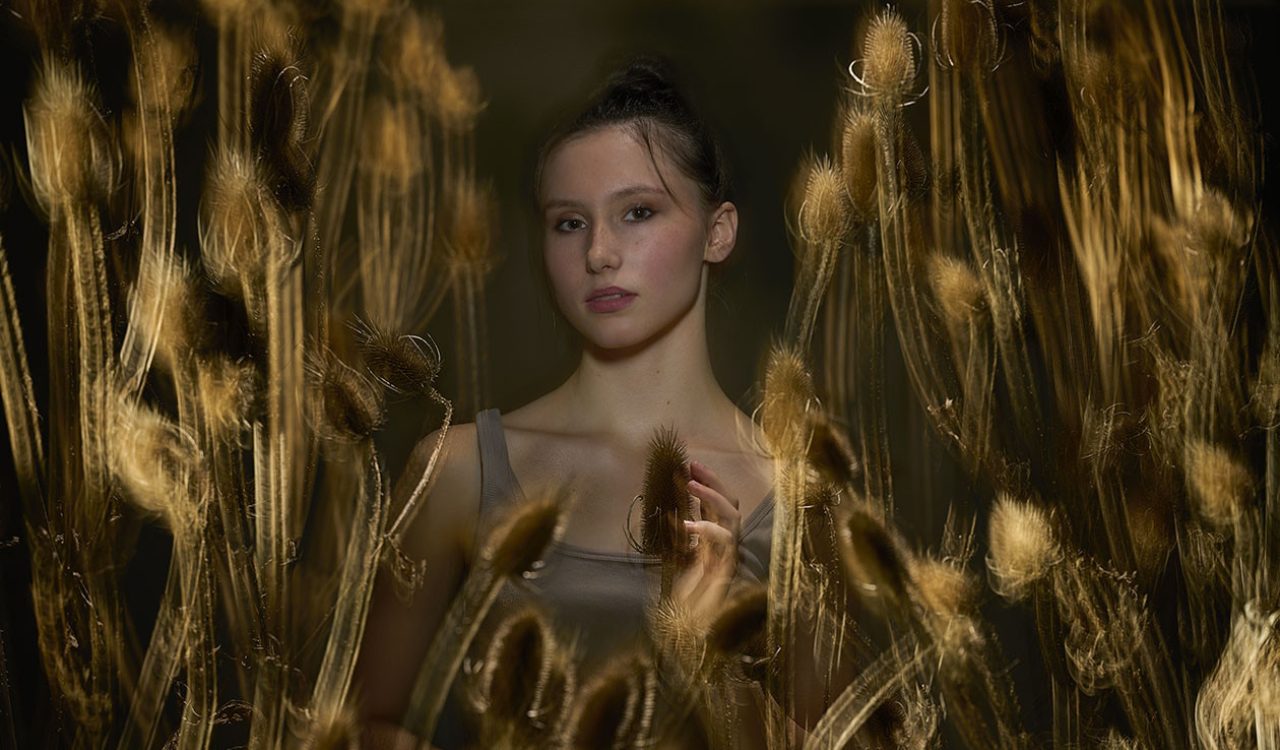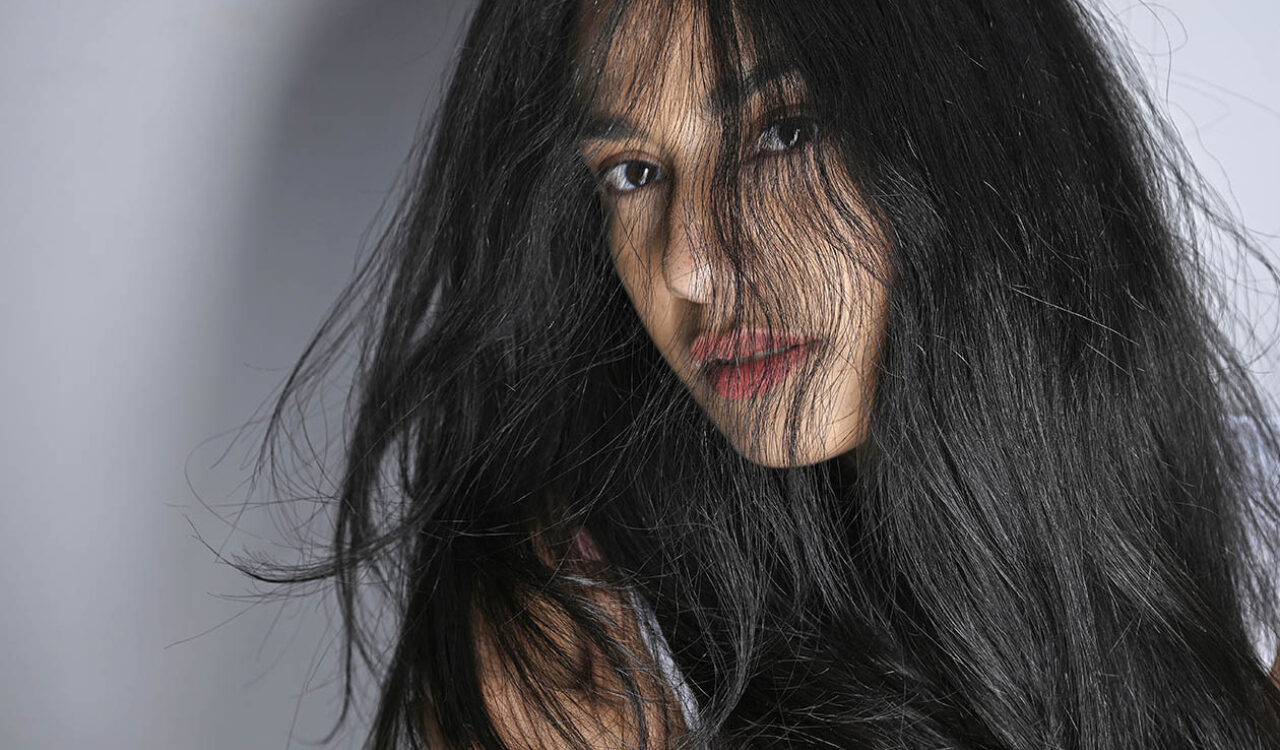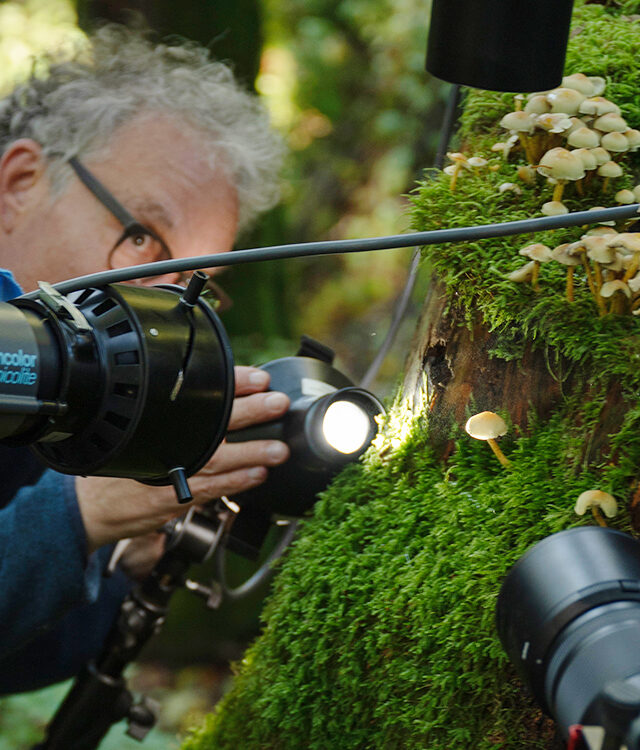How to: Dynamic outdoor shoot with HSS
Studio photography has one really big advantage - we don't have to deal with uncontrollable ambient and strong sunlight. But even if a shoot takes place "on location" and in the bright sunlight of a Swiss summer day, modern flash units make it possible to master these problems as well. In use here was a Satos 1600, equipped with 2 batteries. In the following, the possible problems, but above all their solutions, will be explained.

On a hill south of Basel, overlooking the city, a flag thrower (a typical Swiss tradition and even a sport) was to be photographed. So the camera was facing north, and the afternoon sun was coming from the west, i.e. from the left.
To make the sunlight "sharper" with a short flash pulse, we positioned a Pulso L lamp at the same angle. Attached to this was a P70 normal reflector with a light warm tone filter. To the right of the camera was a Para 88 as the main light. In the Para was another Pulso L but without filter.
The full-frame mirror-less camera used offered a fastest shutter speed (with simultaneous use of flash) of 1/200s. At first glance, everything seemed fine. Since the daylight was underexposed and the model was backlit, the short flash firing time of the Satos 1600 used was enough to get a sharp image.

The areas that were directly illuminated by the sun, on the other hand, appeared somewhat blurred due to the relatively slow shutter speed. In addition, shadow contours appeared around the moving parts. All in all, not satisfactory.
We therefore decided to shoot the whole set in HSS mode. In this mode, the flash is fired before the exposure starts and the flash duration is extended to the maximum. We got what could more casually be called "continuous flash" and could now work with any camera shutter speed. We opted for 1/4000 s (with the aperture suitably wide open).

The sharpness in the image now came not from the short flash time, but from the fast shutter speed - logically, therefore, the sunlight was also exposed only very briefly and the whole image was perfectly sharp. Problem solved.
About 20 minutes after sunset, we tackled the second concept. Continuous light was to be used to capture the dynamics of the flying flag. In keeping with our experience with the sun, we had to make sure that the continuous light (from two battery-powered LED F160 lights) illuminated only the flag, not the flag thrower. Honeycomb grids in the P45 and P65 reflectors guaranteed this. The flash light remained largely unchanged. Only the warm backlight now came from a 30x120 cm softbox.

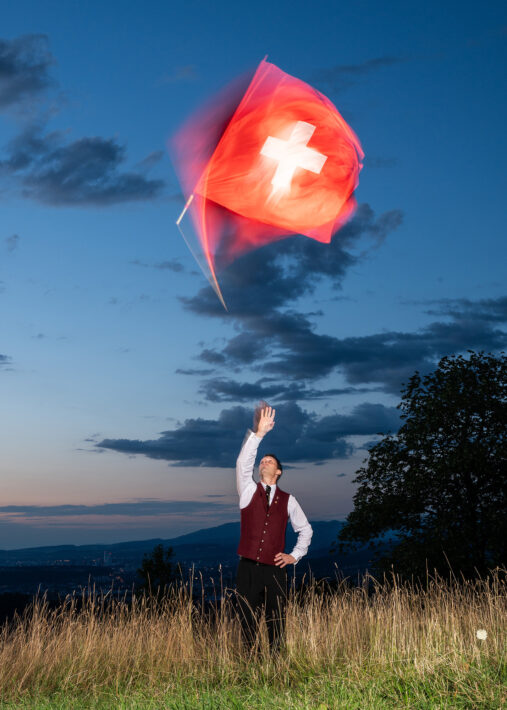
Flag thrower: Pascal Oberli

